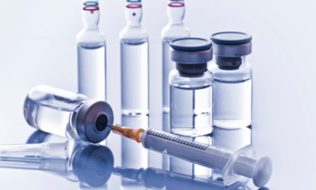

Don’t confuse biosimilars with generic drugs, cautioned Dr. Ian Blumer at the 2018 Halifax Benefits Summit in September.
While the terms may be used interchangeably, these two types of drugs aren’t the same thing, said the endocrinologist and director of the Charles H. Best Diabetes Centre in Whitby, Ont., during his presentation. “Generic drugs are chemicals. They are small molecules that are easy to copy.”
Biologics and their lookalikes, on the other hand, are large, complex molecules, and it’s difficult to predict how they may affect any specific individual. “It is important to judge each biosimilar . . . as a new, unique drug,” said Blumer. “These are new drugs with a limited experience.”
Read: Is nudging biologic patients towards biosimilars a good choice?
Also speaking during the session, Durhane Wong-Rieger, president and chief executive officer of the Canadian Organization for Rare Disorders, noted the topic should have a more human face. “There must be patient-centred access to biosimilars,” she said. “Patients have to have confidence they are getting something they can trust.”
While patients are responsible for the safe and effective use of a biologic, they often experience challenges adapting to these drugs, noted Wong-Rieger. It’s important that patients understand what to expect and how to manage risks. They must also be confident that a medicine is best for them personally — and to be clear on whether changes in symptoms are due to their condition or their medication.
The cost and potential cost-effectiveness of biosimilars make them increasingly attractive to plan sponsors and administrators, said Wong-Rieger. “As more biosimilars come on the market, prices will continue to come down. Are you going to switch patients every year as a new biosimilar comes on the market?”
Read: Canadian physicians more familiar with biosimilars but still lack understanding: survey
There are four critical principles for patient-centred access to biologics, said Wong-Rieger. These comprise ensuring individual, informed choice; honouring patient preferences; avoiding non-clinical switching; and monitoring desired and adverse effects. If the drugs are monitored and tracked, patients are more likely to be willing to try a biosimilar, she said.
“Let’s put the pressure back on the system. Let’s put the pressure back on the payers.”
Read more coverage from the 2018 Halifax Benefits Summit
